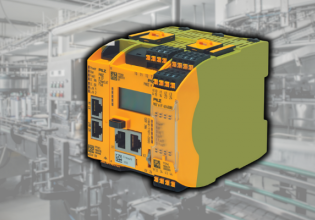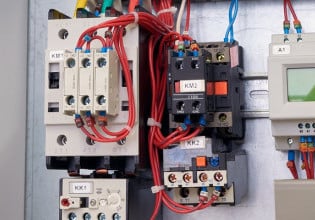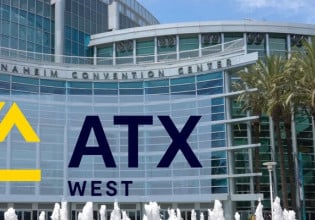Replacing Advanced Process Automation Control System (APACS) with Controllogix
A synopsis of a recent control system replacement on replacing APACS with Controllogix.
In previous articles, I went over various reasons why you might want or need to replace a control system and then went into details on how to successfully design and plan a retrofit or replacement control system. In this article, I will provide details of a recent control system replacement and some of the obstacles that were overcome during the replacement.

Siemens/Moore Products APACS input/output modules.
A Brief History
The Moore Products Company introduced APACS (Advanced Process Automation Control System) in 1991. In the late ’90s, APACS was chosen as the control system of choice for a national research facility’s advanced combustion research lab. The system was installed and would operate for more than 15 years before plans were made to replace the system. The downfall of the system began when Moore Products was acquired by Siemens in 2000, and in 2010 Siemens announced plans to phase out the APACS product line.
Product manufacturing was suspended around October 2011, but Siemens pledged to support all APACS goods and services through October 2020. It was getting apparent that APACS users could begin to face system expansion and maintenance problems as factory parts/exchanges became unavailable.
APACS provided robust reliable hardware coupled with a well-designed software suite that was difficult for the facility personnel to part with. As the facility aged, an abundance of spare parts were acquired and the system had plenty of room for expansion. The one key part of the control system that provided the most risk was the interface between the system processors and Microsoft Windows-based personal computer(s) which ran the control system software and HMI software.
As Microsoft suspended support for Windows XP in 2014, the drivers used for the interface cards became obsolete as there were no plans for a Windows 7 driver. In late 2014, it was decided to replace the facilities' existing control system with a new control system, utilizing Allen-Bradley’s Controllogix.
A Phased Approach
Several options for the retrofit were considered once the replacement control system was chosen. In each of the options, it was decided that the HMI, which was a rebranded version of Wonderware’s Intouch HMI, would remain as it was still supported by Windows 7 and taking on hardware and HMI replacement at the same time was more than the staff wanted to take on at the time.
The first option that was considered was to completely remove all the old hardware, including field terminations, and replace it with the new system hardware and terminations. The existing system was generally laid out in such a way that the processors and I/O (input/output) modules along with power supplies were housed in one cabinet while field terminations assemblies were housed in another cabinet. The input/output modules were connected to the field termination assemblies via factory-made cables.
The advantage of this method would have been that field wiring, which had evolved into somewhat of a mess over the years could be straightened out and all of the aging/obsolete hardware would be gone once the project was finished. The downside to this method would be that some of the existing wiring would be short and might not reach the new field terminations.

Controllogix to APACS I/O bus Module. Image courtesy of Prosoft Technology.
Another option that was considered, was to keep all of the existing I/O modules along with field terminations and install APACS Profibus communication modules in each of the existing I/O chassis. Controllogix processors and chassis would be added with new control logic and Profibus communications modules (being made by Prosoft Technology) would communicate to the existing hardware.
At the time, Prosoft Technology also was developing a Controllogix APACS I/O that would directly interface the existing APACS I/O, but it was not going to be available in time to be included in the control system design so it was never really considered. Either of these methods would have been somewhat more economical than other methods, but eventually, the aging hardware would still need to be replaced in the future. Since the facility had at least another 15 to 20-year life expectancy, it was decided not to use either of these methods.

Factory interface cable solution from Rockwell Automation. Image courtesy of Rockwell Automation.
In the end, the method that was chosen was to reuse the existing field terminations and install all new Controllogix processors, power supplies, and I/O modules. The Controllogix I/O modules would interface with the existing field terminations via custom/retrofitted cables that originally interfaced with the APACS I/O modules and Moore Products Marshalled Termination Assemblies (MTAs), which were used for field terminations.

Before and after. Take advantage of the retrofit to clean up some untidy wiring.
Rockwell Automation actually offers new cables for purchase to interface between the Controllogix I/O and the MTAs, but the facility had an abundance of spare cables available that were custom fabricated by the electrical contractor to interface the new I/O with the existing field termination assemblies. This proved to be a good decision as the contractor did a fantastic job with the cables and provided a much more economical solution.
Unforeseen Obstacles
There were several unforeseen obstacles during the design phase, luckily none were insurmountable. As mentioned previously, the existing system was generally laid out with the I/O modules in one cabinet and the field terminations in another. There was one instance as shown in the photo above where both the I/O modules and the field terminations were mixed. In this instance, the existing field terminations and wiring were a mess. The opportunity was used to clean up the field wiring and terminations, but some of the field wiring was too short. By simply rearranging some of the field termination assemblies and moving some of the I/O channel assignments, all of the wiring was accommodated.

Custom cables were fabricated to connect to the existing termination units.
In almost all cases, the I/O density of the existing system modules and the Controllogix system modules did not match (i.e. 16 channel thermocouple input modules for APACS versus 8 channel thermocouple input modules for Controllogix). The I/O density mismatch was overcome by using the custom cables. For example, one cable would interface two thermocouples I/O modules with one existing thermocouple field termination assembly. The only I/O module type on the new system that did not have a direct interface option with the existing field termination assemblies was the analog current input module.
APACS Standard Analog Module (SAM) included loop power in the I/O module where Controllogix analog input module 1756-IF16H did not. For these, Allen-Bradley termination assemblies were used and loop power was routed to each of the termination assemblies.

The new clean look of a recently installed system.
APACS also had the ability to change input channels to output channels on most modules. Fortunately, there were not many instances where the inputs and outputs were mixed on the same module. For the few cases where they were mixed, the inputs or output channels were just reassigned to a different module in the new system.
There are many details to this installation that were left out in an effort to keep this article concise. In a future article, I will go over the program logic conversion from APACS to Controllogix and provide some of the techniques used to convert the HMI tag database for use with Controllogix. I will go over the commissioning and trouble-shooting that was involved to get the project up and running and divulge future plans for the next phase of this project.
In the meantime, if there are any questions or further details on this retrofit, please post questions or comments to this article and I will be glad to try to answer as many questions as I can.







Where can I access your next article on program logic conversion from APACS to Controllogix?